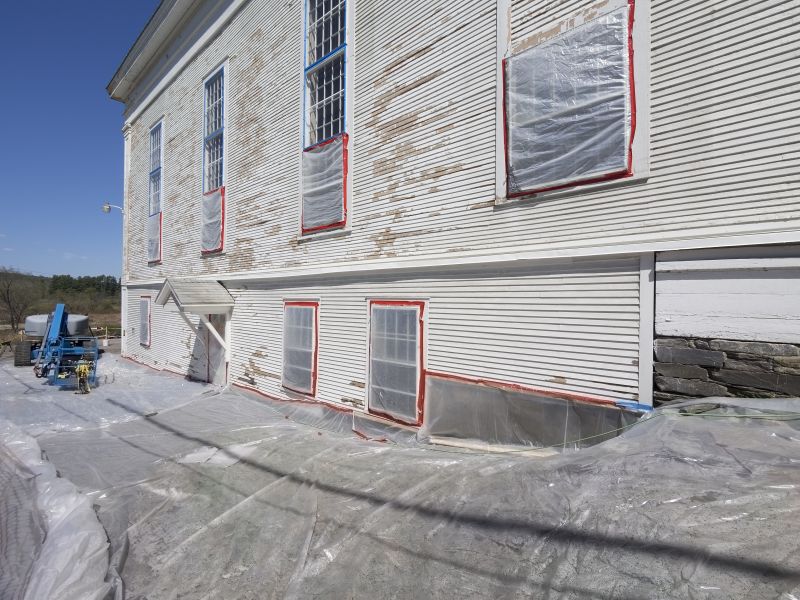Leading Products For Lead Abatement Professionals
Explore top-rated solutions designed to effectively remove lead hazards and ensure safety in your projects.
 Lead abatement products are essential tools used to reduce or eliminate lead hazards in residential and commercial environments. These products are designed for use in situations where old paint, contaminated soil, or other sources of lead pose health risks. Proper application of lead abatement solutions can help create safer indoor and outdoor spaces, especially in buildings constructed before lead restrictions were implemented. It is important to select appropriate products based on the specific type of lead hazard present, as well as the scope and setting of the abatement project.
Lead abatement products are essential tools used to reduce or eliminate lead hazards in residential and commercial environments. These products are designed for use in situations where old paint, contaminated soil, or other sources of lead pose health risks. Proper application of lead abatement solutions can help create safer indoor and outdoor spaces, especially in buildings constructed before lead restrictions were implemented. It is important to select appropriate products based on the specific type of lead hazard present, as well as the scope and setting of the abatement project.
Top Overall Option
Comprehensive Lead Abatement Kit
A comprehensive lead abatement kit typically includes a variety of tools and solutions designed for multiple stages of lead hazard reduction. These kits often feature encapsulants, paint removers, protective gear, and disposal supplies, providing a well-rounded approach to lead hazard management. They are suitable for both DIY enthusiasts with proper training and professional contractors seeking reliable, all-in-one solutions. Selecting a kit with clear instructions and safety features can help ensure effective and safe lead hazard mitigation.
Types of Products For Lead Abatements
Lead Paint Encapsulants
Seal and contain existing lead-based paint to prevent deterioration and reduce exposure risks.
Paint Strippers and Removers
Specialized chemical solutions designed to safely remove lead-based paint from surfaces.
Lead Soil Stabilizers
Products used to treat contaminated soil, reducing lead bioavailability and migration.
Dust Suppressants
Materials that minimize dust during renovation or removal processes to prevent lead dust dispersal.
Protective Gear
Personal protective equipment such as masks, gloves, and coveralls designed for lead hazard work.
Vacuum Systems
HEPA-filtered vacuums specifically designed for lead dust removal and containment.
Soil Coverings
Barrier materials like vinyl or heavy-duty fabric used to cover contaminated soil temporarily or permanently.
Enclosure Materials
Materials used to enclose or seal off lead-based paint hazards in walls and ceilings.
Soil Excavation Tools
Heavy-duty tools designed for safe removal of contaminated soil in abatement projects.
Containment Barriers
Physical barriers used to isolate work areas and prevent lead dust spread during abatement.
Popular Choices
A gel-based chemical designed to soften and remove lead-based paint from surfaces.
High-efficiency particulate air vacuum systems used to clean up lead dust effectively.
Specialized paint formulations used to seal in lead-based paint on walls and ceilings.
Chemical treatments applied to contaminated soil to reduce lead mobility.
Disposable coveralls designed for safe handling of lead hazard environments.
Pre-moistened wipes used to clean surfaces and prevent dust dispersal during abatement.
Heavy-duty plastic used to seal off work areas and contain lead dust.
Hand tools designed for safely removing loose lead-based paint from surfaces.
Testing kits for identifying the presence and levels of lead in paint, dust, or soil.
Heavy-duty tarps used to cover and contain contaminated soil temporarily.
Lead contamination can originate from various sources, including peeling or chipping paint, contaminated dust, or soil. Lead abatement products range from encapsulants that seal in existing lead-based paint to removal tools that safely strip paint or soil. When considering lead abatement, safety precautions such as protective gear and proper disposal methods are crucial to prevent exposure during the process. Professionals often recommend a combination of products tailored to the particular needs of the environment to ensure effective hazard mitigation.
Choosing the right lead abatement products involves understanding the specific requirements of the project, including the type of surface, the extent of contamination, and local regulations. Proper training in the use of these products is also essential to ensure safety and effectiveness. Regular testing before and after abatement can help verify the reduction of lead hazards, making the environment safer for occupants. While lead abatement can be a complex process, the right products and procedures can facilitate safer, more efficient hazard reduction efforts.
Key Buying Considerations
- Identify the specific type of lead hazard present, such as paint or soil.
- Ensure products are compliant with local regulations and safety standards.
- Select products suitable for the surface or material involved in the abatement.
- Consider the scope of the project to determine whether professional-grade or DIY solutions are appropriate.
- Check for clear instructions and safety guidelines provided with the products.
- Evaluate the ease of application and removal for chemical-based products.
- Assess the availability of protective gear and safety equipment needed during use.
- Look for products with proven containment and dust control features.
- Determine the durability and longevity of encapsulants or barriers used.
- Review product compatibility with existing surfaces and conditions.
- Consider environmental factors that may influence product performance, such as moisture or temperature.
- Verify the disposal and cleanup procedures associated with each product.
- Assess the training or expertise required for safe and effective application.
- Budget considerations should include both product costs and potential labor expenses.
- Read customer reviews and ratings to gauge real-world performance and satisfaction.
